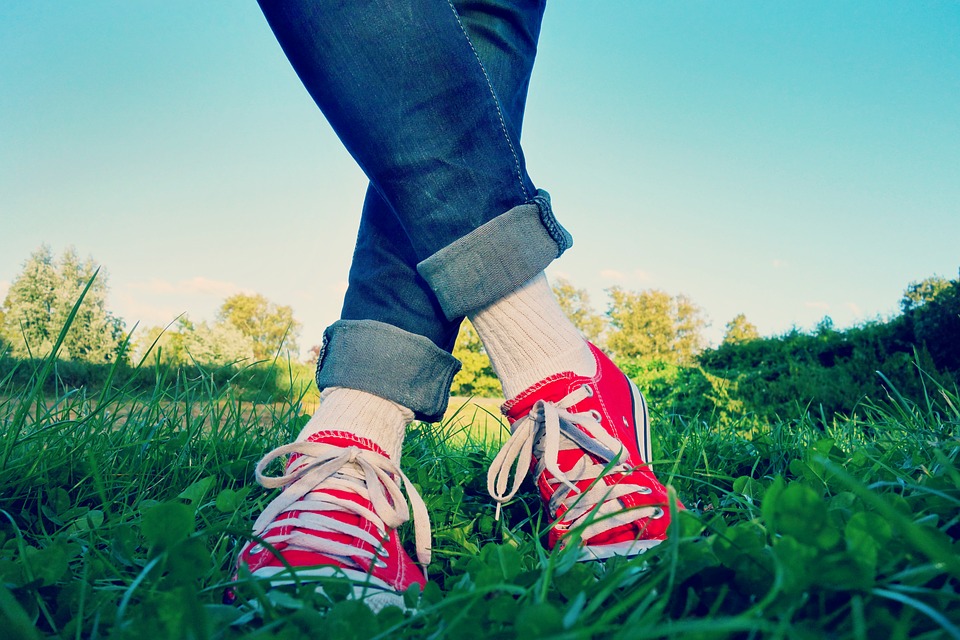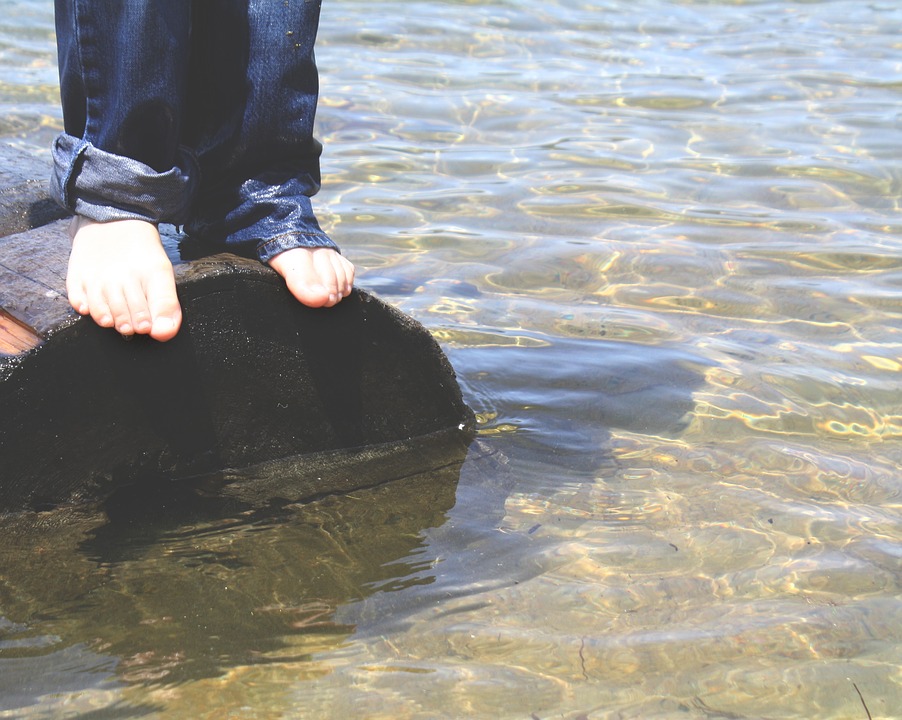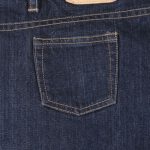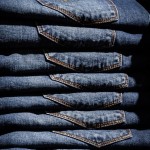Denim jeans are the world’s most popular style of pants. According to a survey conducted by ShopSmart, the average American woman owns approximately seven pairs of jeans. The survey also found that 25% of American women own 10 or more pairs of jeans. With an unmatched level of popularity, you can rest assured knowing that denim jeans will withstand the hands of time for countless years to come. Today, we’re going to take a closer look at this popular garment by answering some common questions about jeans.
What Are Raw Denim Jeans?
When shopping for new jeans, you may come across the term “raw denim.” Basically, raw denim jeans are made of unwashed denim fabric. Regular jeans are typically washed several times to create a lighter color and softer texture. Raw denim jeans, on the other hand, skip this step. The denim is made from the loom, after which it is cut, sewn and made into a pair of jeans before selling. Because raw denim skips the washing process, they are generally darker and stiffer than traditional washed jeans.
How Do I to Stop Jeans from Bleeding?
If the color from your jeans are bleeding onto your shoes or clothes, you might be wondering how to stop this phenomenon. Well, there are a few things you can do to prevent your jeans from bleeding, one of which is to wash them. New jeans that haven’t been worn or washed are particularly prone to this problem. The dye is still “loose” and hasn’t fully settled into the fabric, resulting in bleeding colors. Washing and drying your jeans several times should solve the problem. Additionally, you can set the dye by washing your jeans with a cup of white vinegar. The vinegar encourages the dye to set, reducing the risk of bleeding colors.
Why Are Jeans Lighter Inside?
If you look inside your jeans, you’ll probably notice the denim fabric is lighter than the outside. This is because denim jeans are typically made with two different threads: one that’s dyed white and one that’s dyed indigo blue. Normally, there are about three indigo threads for every single white thread. The twill weaves used in the construction of jeans places the white threads inside the jeans and the indigo threads outside — and this is essentially why jeans are lighter inside.
What Are Stretch Jeans?
While denim has been around for over a century, there’s a relatively new type of denim that’s become increasingly popular in recent years. Known as “stretch denim,” this material is used to make jeans with a higher level of elasticity than traditional denim. Stretch jeans are still make with regular denim, but they contain added fabric like spandex or polyester to make them more elastic. Depending on the specific brand, the ratio is usually around 90% to 99% denim and 1% to 9% elastic fabric. Some people prefer stretch jeans because they are softer and more comfortable to wear. The downside, however, is that stretch jeans aren’t as durable as traditional 100% denim jeans.
What Are Stonewashed Jeans?
Stonewashed jeans live up to their namesake by being made using a special “stonewashing” process. The basic idea is to wash the jeans with pumice stones in a large drum. As the stones beat against the denim, it creates the appearance of natural distress in the form of frayed fabric and patches of wear. You can achieve a similar appearance by wearing your jeans on a regular basis, but this often takes months if not years. A quicker and easier alternative is to buy stonewashed jeans, which are specifically made to look aged and worn in.
Is It Normal for Jeans to Shrink?
The short answer is yes. It’s normal for all clothes to shrink when washed and dried, and jeans are no exception. Assuming they are made of 100% denim, however, they should only shrink about 3%, which shouldn’t cause any sizing problems. If they are stretch jeans made of both denim and an elastic material, on the other hand, they are likely to shrink a bit more. Nonetheless, washing and drying your jeans shouldn’t cause them to shrink an entire size, meaning you can still wear them without altering them.
How Do I Prevent My Jeans from Wrinkling?
There are a few steps you can take to prevent your jeans from wrinkling. First and foremost, try to get into the habit of folding or handing them up immediately after taking them out of the dryer. The longer you allow your jeans to sit on the dryer, the greater the chances of them wrinkling. Secondly, consider using a fabric softener when washing your jeans. While it’s primarily used to make fabric softer, it will also smooth out wrinkles. And when you do notice wrinkles on your jeans, dry using a steam iron or hair dryer to eliminate them.
How Do I Prevent the Bottom of My Jeans from Dragging on the Ground?
When the bottom of your jeans drag on the ground, it will wear away the denim fabric. To prevent this from happening, make sure you are wearing the right type of jeans. Wearing boot-cut jeans with sandals or flip-flops, for instance, is a poor combination that will likely cause the bottom of jeans to drag on the ground. Wearing straight-leg or skinny jeans with tennis shoes, however, should prevent this from happening. You can also prevent the bottom of your jeans from dragging on the ground by folding the hem a few times. Some people even sew the hem into place after folding it, further preventing this from happening.
How Do I Find the Perfect Fit?
Finally, you might be wondering how to find the perfect fit for jeans. Well, the easiest way is to order your jeans here at MakeYourOwnJeans. You can specify your own body measurements, which we’ll use to create the perfect fit. In comparison, traditional retail stores sell jeans in “as is” sizing with no additional customization.












